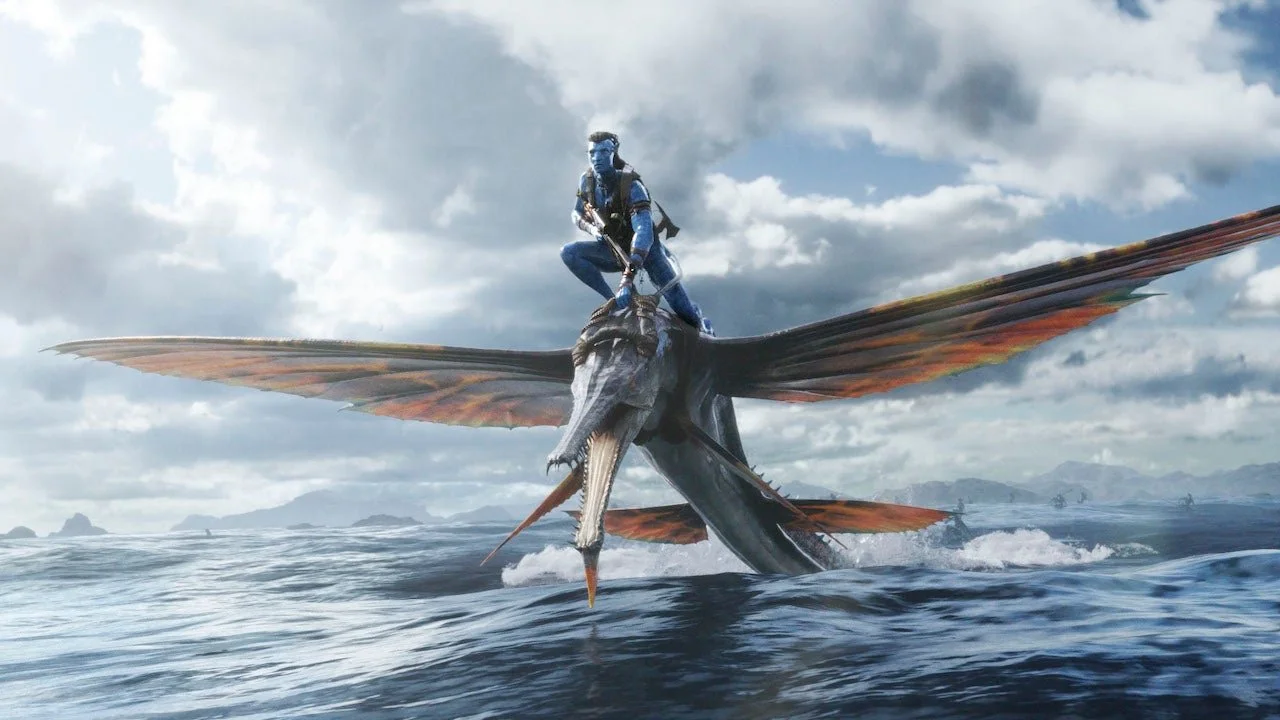Avatar: The Way of Water
After thirteen years, Jim Cameron returns to the director's chair for Avatar: The Way of Water. The Way of Water serves its job incredibly well as a sequel. It does this with three different strategies. The first strategy is to expand the world-building established in the first film. The second strategy involves introducing new themes and messages, in addition to building on those presented in its predecessor. Lastly, the third strategy is through continuing the story and character journeys in a new, fascinating course. Nevertheless, the picture has a different style in its climax compared to the modern blockbuster climaxes in the 2010s.
The feature expands on world-building by changing the setting from the prior film. The movie shifts the scene from the forest division of Pandora to the reef division. The reef in the film differs from the forest. The production design for the reef incorporates new colors and beasts to differentiate it from the forest. The reef clan has its own culture, distinct from that of the forest people. The reef community has a hateful relationship with the outcast whale-like Tulkan, and has its sign language created only for the feature. The reef culture also doesn't break the rules and tone of the Avatar universe established in the original.
Furthermore, the themes from the first film come back for this story and are expanded on in new, compelling ways. The central theme is that humans impact the ecosystem in negative ways. This theme is set in motion when the humans return to Pandora. In this film, they are ready to abuse the Tulkan for their gain. An example of their abusiveness is when Lo’ak discovers that the humans hurt the Tulkan by shooting a metal bow into its flipper. Humans have a limited point of view on the ecosystem of Pandora, viewing it solely as a means for profit. They murder an entire whale in the third act just to get less than a gallon of liquid inside the whale. On the other hand, Lo’ak helps the whale when it’s injured, just as the whale helped him.
In addition, the film continues the story and character journeys in a new, fascinating course. The original Avatar covers Jake and Neytiri's first meeting as a couple. The Way of Water advances their relationship to the next level by making them parents, illustrating how Jake's, Neytiri's, and the kids' ideologies intersect, leading to yelling and fighting. The best example of this is in the first act when Jake shows no grudges towards the human kid named Spider, yet doesn't accept him as his son. Meanwhile, the kids adore Spider and are good friends with him. However, Neyteryi hates Spider, believing he's not her son and shouldn't be living near them, and she's willing to kill him if necessary. Their ideologies towards Spider cause the parents and kids to fight and yell.
Also, the final battle of the film is different from the 2010s century science fiction showdowns. It isn’t spread wide behind a beautiful background with heroes charging from one side and the villains charging on the other. The battle unfolds in a claustrophobic environment, marked by heavy breathing and characters struggling to escape, all while crying. This is never done in science fiction movies, as the actors have to be perfectly good-looking and can’t look sleep-deprived or sick. But with CGI, the characters can look miserable. Despite this, the final battle is padded out a bit and has sequences similar to the disaster at the end of Titanic, another Jim Cameron movie.
Finally, the film’s biggest achievement is the visual effects. The effects in the film industry are particularly impressive, as they are so realistic that you can see the actors' faces in the performance, captured with every tick and gesture they make, displayed in the CGI.
Nonetheless, this isn’t a perfect film and has its flaws. The major flaw with the movie is that it’s too long. The feature uses the first ten minutes to recap the events of the former movie as well as summarize what happened between the end of Avatar 1 and the beginning of Avatar 2. This film doesn’t expect its audiences to watch the original, in contrast to sequels like The Empire Strikes Back and Blade Runner 2049. Another minor nitpicking problem is the film never makes it clear whether the Na’vi can breathe underwater. Sometimes they open their mouths underwater, and sometimes they hold their breath. While this was a nitpicking issue it should have been clearer.
